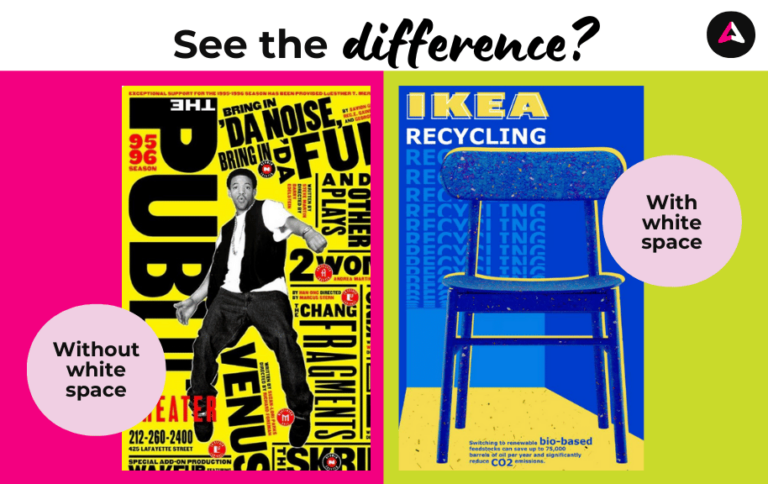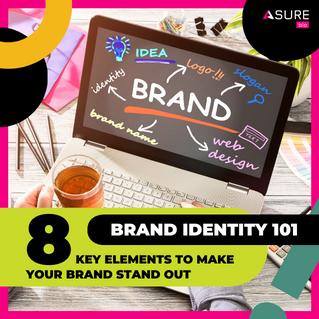Go-to Principles of
Design for Professionals
and Non-professionals
Go-to Principles of Design for Professionals and Non-professionals
A comprehensive guide on how to elevate your designs using the 7 basic design principles.
In today’s digital age, design is no longer confined to the realm of professionals. The wealth of information and tools available empowers everyone to delve into the art of design. Everyone holds the potential ability to be a designer. Artists, creators, and designers leverage fundamental design principles to craft visually compelling and captivating designs.
In this article, you’ll discover 7 design principles that all professionals apply in their day-to-day work which you may have instinctively applied without even realising. These principles serve as a guide to effectively organise and arrange elements, allowing you to convey your intended message with impact.
Designers frequently discover that revisiting design principles can illuminate the source of design problems when challenges arise.
Balance the fun.
Balance imparts a sense of stability. Much like how you wouldn’t place all your furniture on one side of a room, balance is about evenly distributing the visual weight within a design by organising elements, colour, and space.
There are 2 types of balance:
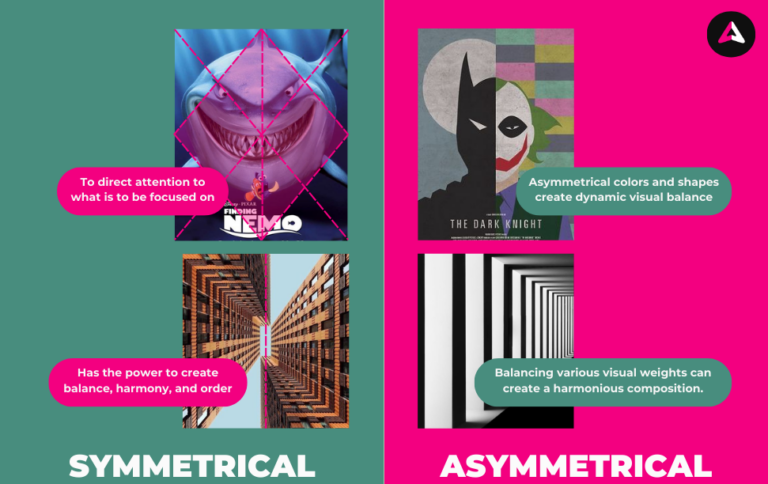
Drive aesthetics with harmonious alignment.
Making things line up nicely in your design is like giving it a tidy and well-organised look, so it doesn’t look messy or all over the place.
There are two ways to line things up: you can put them close to the edges, or you can align them along the centre, either side-to-side or top-to-bottom.
Here are some tips and tricks you can apply:
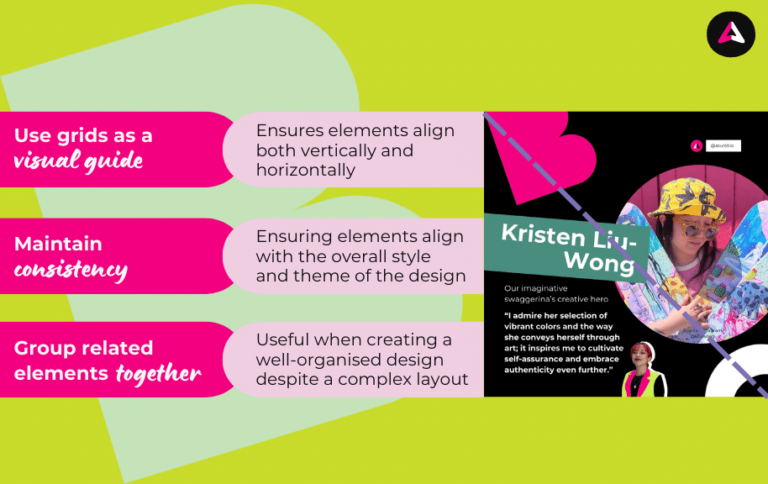
Use contrast to create prominence.
Contrast is crucial in design – it’s about making elements stand out at first glance. Achieve it with elements like typography, colour, shape, and sizes. Without contrast, your design may appear dull. More than visual impact, it also plays a vital role in accessibility. Good contrast in text and colour helps people with visual impairments read content more easily.
Here are three types of contrast you can apply to your designs:

Emphasis brings focus.
Emphasis is strategically positioning the most significant message at a focal point within the design using various elements – which is why sales posters often highlight their best prices using red callouts or bold, red fonts. Misplacing emphasis may lead to your audience being confused about your key message.
Here are some ways you can bring emphasis to your key messages:
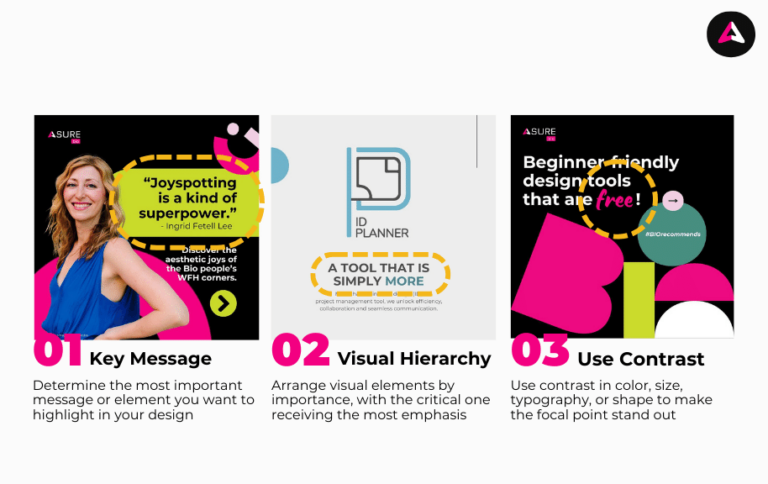
Repeat like a broken recorder.
Repetition involves the consistent use of identical or similar elements within a design. Its purpose is to establish a sense of coherence and continuity.
Brand designers apply repetitive elements on business cards, posters, or websites of brands to reinforce their identity and ensure it remains memorable to the audience. Repetition is also used to create patterns, which can add interest and visual appeal to a design.
Here are some ways we’ve used repeating elements for our parent company, ASURE Group’s LinkedIn posts:

Getting the right proportions.
Proportion refers to the relative size and weight of the element in relation to the spaces in between them.
Getting proportions right in design is essential for visual harmony, readability, and a polished appearance. Well-balanced proportions guide the viewer’s focus and reinforce the hierarchy of information, ensuring effective communication and engagement.
Once you have a strong grasp of fundamental design principles like balance, alignment, and contrast, managing proportion will easily become second nature.
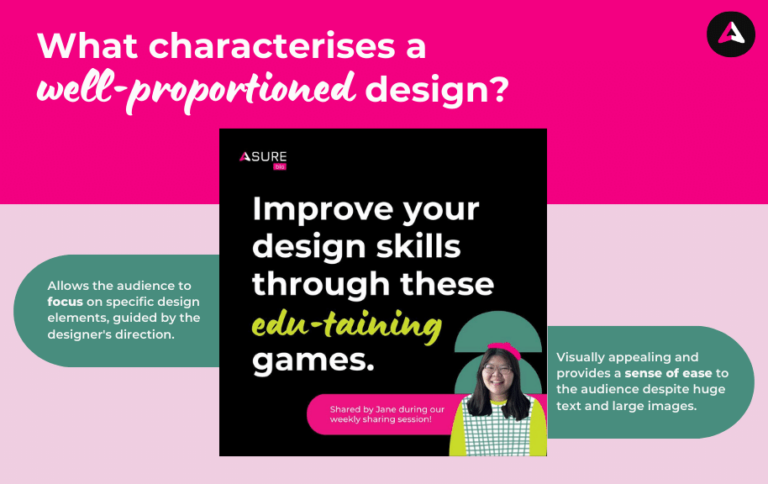
Move like jagger.
Movement in design is like the flow that takes your eyes on a journey across the page. It’s about creating a visual path that guides you smoothly from one point to another. This is crucial because it makes the design interesting and easy to follow.
Here are three patterns to organise the visual journey your audience takes:

These patterns aren’t just cool tricks; they make the design more engaging, helping you navigate the content effortlessly and making the whole experience visually pleasing.
White Space, or blank space as Taytay will call it.
White space in design is like the breathing room for your eyes. It’s the unoccupied areas in design, characterised by a background colour or a subtle texture and patterns. This space isn’t wasted; in fact, it’s a powerful tool. It gives your eyes a break, making the design feel less overwhelming and more organised. Think of it as the pause button in a visual composition.
White space helps highlight what’s important, allowing elements to stand out and grab your attention. It’s like the silent conductor in the symphony of design, making sure every note gets heard.
White space helps highlight what’s important, allowing elements to stand out and grab your attention. It’s like the silent conductor in the symphony of design, making sure every note gets heard.
Using basic design principles to create visually appealing designs.
These design principles are like a dream team – complementing each other seamlessly. Whether you’re a designer or an artist, applying these principles sets the stage for visually captivating and creative creations. They empower designers to efficiently communicate their intended messages and objectives.

Inspired to build
your brand and
marketing strategy?
Discover your superpower and find out more about your brand personality.
